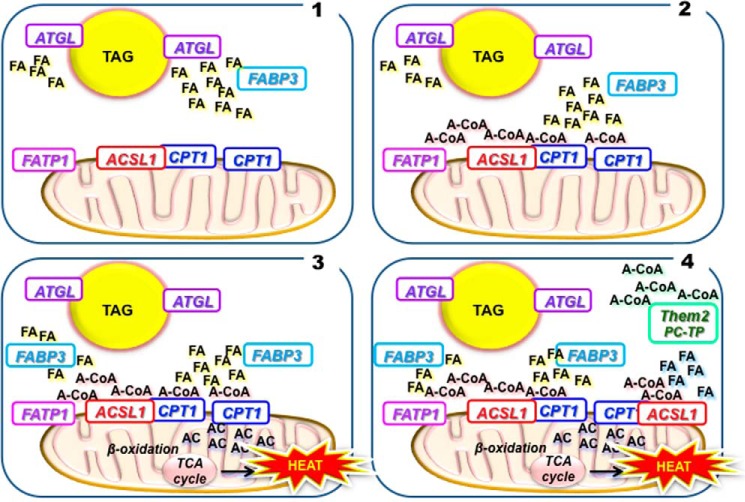FIGURE 2.
A hypothetical assembly of proteins, substrates, and products that are critical for thermogenesis in brown adipocytes. Mice are unable to maintain a normal body temperature if they lack ATGL, FABP3, FATP1, and ACSL1 or are heterozygotes for CPT1. 1) ATGL hydrolyzes FA from TAG in lipid droplets. 2) FABP3 binds these released FAs and transports them to FATP1 and ACSL1, which convert them to acyl-CoAs (A-CoA). 3) These acyl-CoAs are substrates for CPT1, which converts them to acylcarnitines (AC) that enter the mitochondrial matrix and are metabolized by β-oxidation to produce heat. 4) Thioesterase superfamily member-2 (Them2) and its partner phosphatidylcholine transfer protein (PC-TP) improve the thermogenic process by converting acyl-CoAs, perhaps those formed in other locations, back to fatty acids that can be reactivated by FATP1 and ACSL1 located at the mitochondrial membrane. TCA, tricarboxylic acid cycle.

